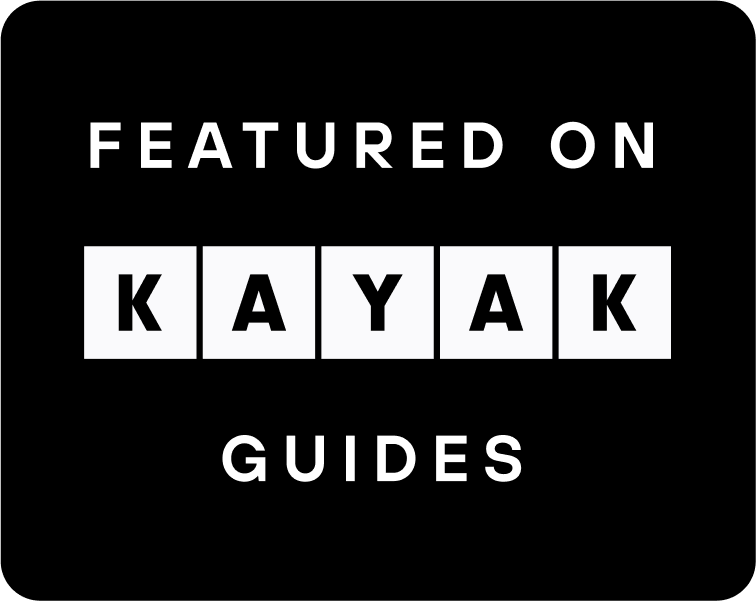Looking & Seeing
one long look at one work of art
John O'Hern is an arts writer, curator and retired museum director who is providing a weekly contemplation of a single work of art from our gallery. In our fast-paced lives overflowing with information, we find it necessary and satisfying to slow down and take time to look. We hope you enjoy this perspective from John.
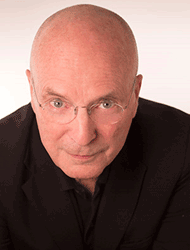
John O'Hern has been a writer for the 5 magazines of International Artist Publishing for nearly 20 years. He retired from a 35-year-long career in museum management and curation which began at the Albright-Knox Art Gallery where he was in charge of publications and public relations and concluded at the Arnot Art Museum where he was executive director and curator. At the Arnot Art Museum he curated the groundbreaking biennial exhibitions Re-presenting Representation. John was chair of the Visual Artists Panel of the New York State Council on the Arts and has written essays for international galleries and museums.
October 6, 2024
JAY BAILEY | I've Never Been to Duckwater, but I Know Jack Malotte
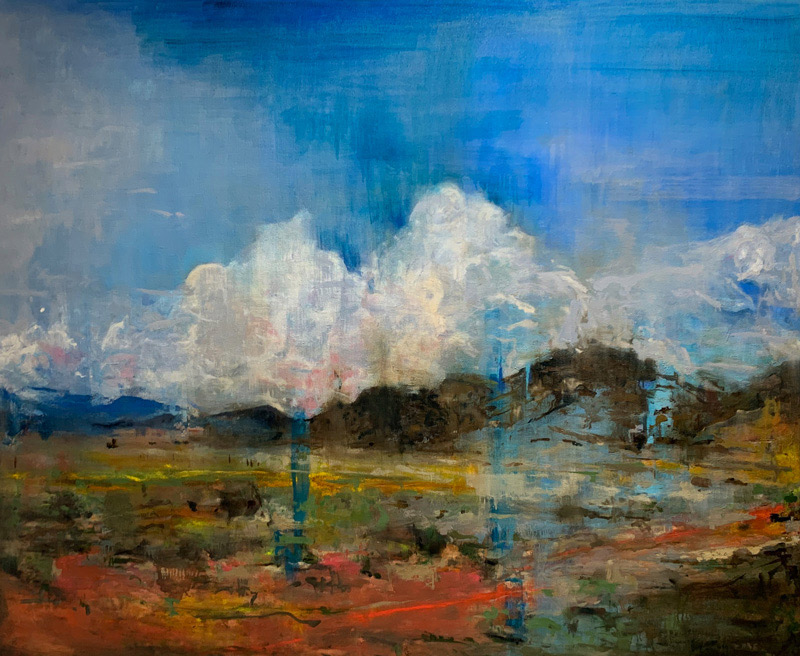
Jay Bailey has never been to Duckwater, Nevada, but he does know Jack Malotte. Jay was born in Reno and Malotte was brought up there--nearly a quarter century earlier. But their paths crossed.
“I was a quiet kid,” Jay says. “I was very insular. My parents were always supportive of my interests, Little League, my BMX, art. I was a latchkey kid and I was allowed to run around on my bike with the Sierra Nevada rising in the distance. I took the landscape for granted when I was young. In my 20s I lived in San Francisco, then Las Vegas,Texas. They never felt like home despite the initial comfort I felt being there. As I’m getting older, I’m trying to find home again in my work. My paintings are love letters to what I understand to be home despite the dilemma of ‘is home a place or a feeling?’”
Jay writes, in an artist statement, “The landscape of the American West has always calmed me and steadied my heart. I need to paint these spaces. Spaces with which I feel kinship. Spaces which make me feel like I’m home. They are the blur of my childhood memories. They are sediment and mountain shaped by time immortal. A dissolve of sunlight in the particles of parched air that carry sound, still and long. They are adorned with draught shaped wonders and skies of flowing stone. They are lonesome and demonic, pure in their inhospitable grandeur and uncaring of their sapien witnesses.”
When he was in elementary school, he met Jack Malotte and his parents arranged for him to take private art lessons. Malotte (Western Shoshone and Washoe) had attended California College of Arts and Crafts in Oakland, and was an editorial illustrator for the then Nevada State Journal. Later, in the 1980s, he became involved in Native American and environmental causes. In 1999, he arrived in the remote community of Duckwater to paint a mural in the school gymnasium . . . and never left. In 2019, The Nevada Museum of Art produced a traveling exhibition of his art.
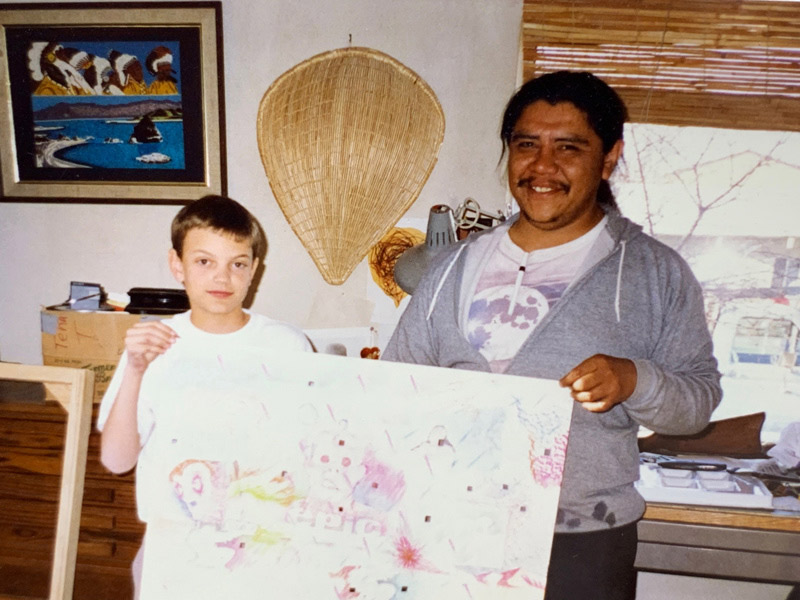 Jay’s painting I’ve never been to Duckwater, but I know Jack Malotte is an homage to his mentor with whom he has reconnected on Facebook. “We would make work together,” Jay reminisces. “He showed me what an artist does, how to be an artist. The work was free-form, non-restrained. Many of his works are great desert landscapes.
Jay’s painting I’ve never been to Duckwater, but I know Jack Malotte is an homage to his mentor with whom he has reconnected on Facebook. “We would make work together,” Jay reminisces. “He showed me what an artist does, how to be an artist. The work was free-form, non-restrained. Many of his works are great desert landscapes.
“I was a pretty cautious young person. I drew because I liked comic books. It was easy to go from Marvel comics to the Sistine Chapel with the same muscular figures. Jack had been influenced by the artists of the Bay Area from Chuck Close to psychedelic alternative comics.”
Jay received his BA in Fine Art from the University of Nevada in Reno, studied at the San Francisco Art Institute, and received his MFA from the University of Nevada, Las Vegas (UNLV).
“When I was an undergrad,” he says, “I didn’t connect with Jackson Pollock. I didn’t know why people were enthralled with his paintings. When I was at the Art Institute I went to the San Francisco Museum of Modern Art and saw my first Pollock in person. “I instantly got it. It was like a religious experience. It unlocked a new experience that I merged that with my figurative work. Seeing Picasso’s Guernica in Spain when I was a kid had a big impact on my drawing the figure. Seeing the Pollock in person allowed me to step away from the figure and toward landscapes. The figures may creep back but losing them allowed me to become a better painter.
“In the landscape, there’s the horizon, sky and ground. That gives some leeway. It leaves room to play, to find more expression.
“There isn’t a ton of color in the desert. I had seen a piece by Jack on Facebook in which he had extended the color range. The art critic Dave Hickey was a professor at UNLV and gave a talk here in Reno. He said he loved folklore because it contains truth even if it’s not true.
“There are a lot of paintings rusty brown things in the desert. The more I’ve painted I’ve tried to find the right rusty brown. It pushes me to express the colors of the desert further even though I don’t see them directly. It’s visceral. I know when it feels right. The blue sky in Nevada doesn’t feel quite right when I paint it blue. When I disrupt it, it feels more honest. It needs to be undone a bit.”
Jay doesn’t lay out a sketch on the canvas. He just starts painting. Mark making, to him, has as much purpose as making an image. “I’ll talk to the marks,” he says. “I’m not in control. I’m responding to what happens. There are multiple responses. A mark can communicate a certain vitality. If the image becomes too rendered, it’s not satisfying to me.”
Pollock’s process was similar. He wrote, “When I'm painting, I'm not aware of what I'm doing. It's only after a get acquainted period that I see what I've been about. I've no fears about making changes for the painting has a life of its own.”
Jay comments, “I want to experience the landscape through the lens of what paint can do. Cormac McCarthy saw landscape as a character in his novels. I want to depict that character in a way.”
In “Blood Meridian, or, the Evening Redness in the West”, McCarthy commented on the sameness and diversity of the desert. “In the neuter austerity of that terrain all phenomena were bequeathed a strange equality and no one thing nor spider nor stone nor blade of grass could put forth claim to precedence. The very clarity of these articles belied their familiarity, for the eye predicates the whole on some feature or part and here was nothing more luminous than another and nothing more enshadowed and in the optical democracy of such landscapes all preference is made whimsical and a man and a rock become endowed with unguessed kinship.”
Although Jay calls himself an “indecisive painter,” his instinct and willingness to destabilize the conventions of landscape painting make his landscapes “feel more real. I’m finding the edge of where a thing is and where it isn’t.”
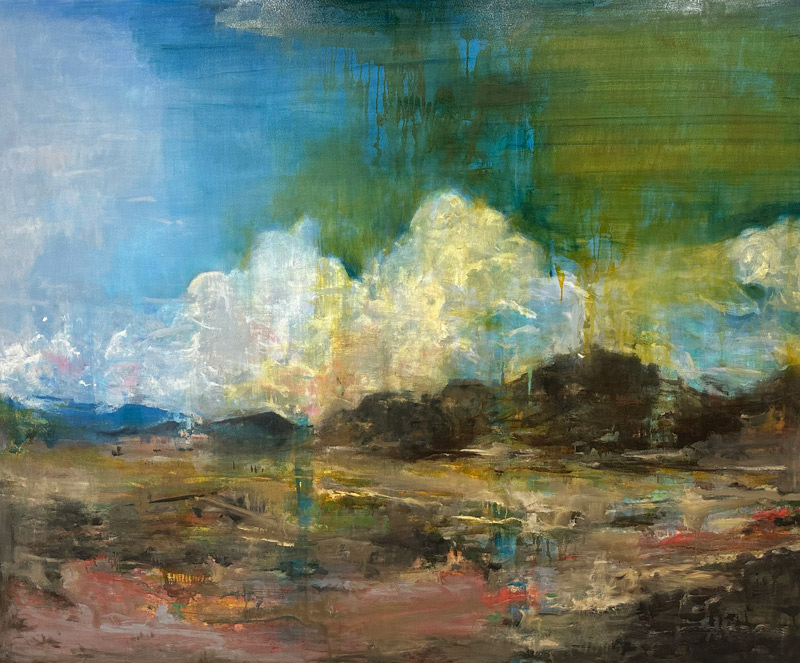 Painting in layers, he knows that “one color influences the colors on top of it. The impossible blue sky in an early state of I’ve never been to Duckwater… gets a yellow wash that becomes green as the blue shows through, and the white clouds allow the yellow to be yellow.
Painting in layers, he knows that “one color influences the colors on top of it. The impossible blue sky in an early state of I’ve never been to Duckwater… gets a yellow wash that becomes green as the blue shows through, and the white clouds allow the yellow to be yellow.
Jay comments, “After months of thinking this painting was finished, I layered in more weirdness that only those who have spent time in the high desert know to be true. Colors melt out there.”

